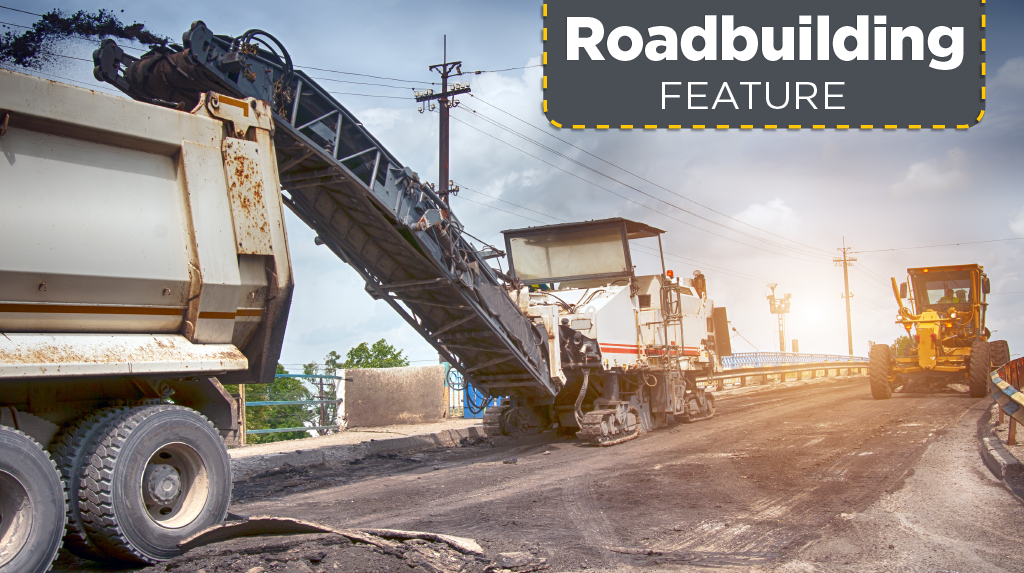Technology is making an entry into how existing roads are restored, particularly in the milling operation.
Pavement milling is the process of removing part of the surface of roads, bridges and parking lots, anywhere from just a few inches to full depth removal.
It’s standard practice in Ontario and other jurisdictions for a range of reasons including removing surface irregularities.
But now 3D milling is on the radar, or more specifically, in the milling machines.
In use in many American states for more than 10 years, 3D milling allows milling machine operators to produce the correct profile of a road without using external, onsite grade references, such as string lines.
The quality of the milling is primarily determined by the quality of a 3D digital design model (DDM).
Operators mill out exactly what the design stipulates, says the business development manager for Control Systems CA, a Calgary-based firm that provides a wide-range of innovative survey, mapping and project control services.
“You (the operator) mills out what exactly was designed. So, if the design is solid, the repaired road will be solid. That means safe with good drainage and smooth and comfortable to drive,” says Vitezslav Obr.
As well, there are the environmental and economic benefits because well repaired roads last longer than ones that aren’t, he says.
“High quality 3D milling will make a major contribution to achieving high pavement quality parameters.”
At the same time, he stresses that a smooth road surface cannot be paved on a poor milled surface or that inappropriate milling practices and strategies can be rectified by the actual paving.
In principle, any road milling machine can be used as long as it can be used to change the depth and cross slope of the milling, even manually, says Obr, when asked what kinds of machines can be used for 3D milling.
“Of course, it is preferable to use modern road milling machines that are already prepared for automatic 3D milling by the manufacturer.”
Although not in widespread use in Ontario, the future of 3D milling technology in the province looks very promising, largely due to a positive approach taken by the Ministry of Transportation, says Obr.
But that approach is exactly the reason the Ontario Asphalt Pavement Council (OAPC) spent more than a few months planning and organizing a panel discussion on 3D milling technology at its annual fall seminar this past December.
The catalyst for that discussion was the Ontario Provincial Standards Specification (OPPSS 510) which stipulates the use of 3D milling in some bid packages, says OAPC plant and paving committee chair Mike Deckert, the panel moderator.
“We were getting all sorts of questions from our members asking, ‘what’s this all about?’”
In response to those inquiries, several OAPC committees began researching and drawing up 15 questions on almost every aspect of 3D milling which Deckert then posted to the five-member panel. It was comprised of a mix of representatives from contracting firms, suppliers, manufacturers and owners. In this case the owner representative was Stephen Lee, the pavements section head for the Ministry of Transportation.
Some of the questions centered around the 3D milling’s impact on production rates, if the age of the milling machine matters in adapting the technology, the type of projects that have used it and the results from those projects.
A major takeaway from the question and answer forum was that the roadbuilding industry can’t ignore 3D milling technology, says Deckert.
That point is underscored by OAPC’s technical director, .
As the council is committed to promoting quality and sustainable asphalt products and paving techniques in Ontario, it takes a strong interest in technologies such as 3D milling.
The council sees the benefits in optimized milling derived from the 3D milling technology – ranging from improved ride quality, prolonged pavement service life and reduction in future maintenance needs, to accurately forecasting reclaimed asphalt pavement production, trucking and storage requirements for each job, says Ambaiowei.
“Consequently, we encourage service providers, users and road owners seeking to implement the 3D milling technology to ensure the accuracy of the input data from the road surface survey before executing the milling plan; after all, bad inputs mean bad results.”
The council intends to encourage its use through a variety of methods including consultative forums, educational seminars, workshops and paving demonstrations.











Recent Comments